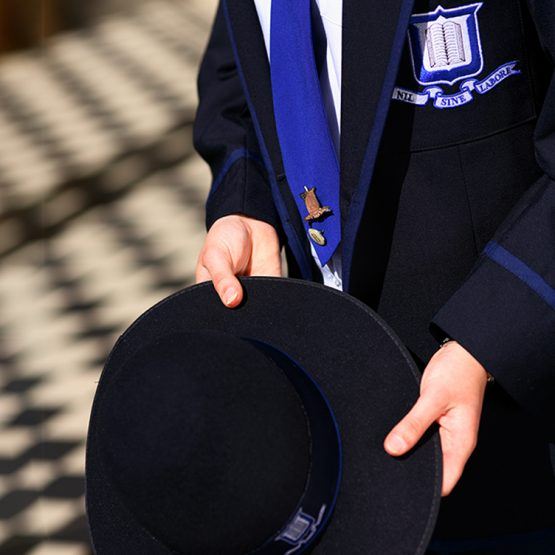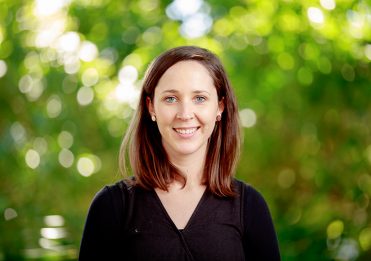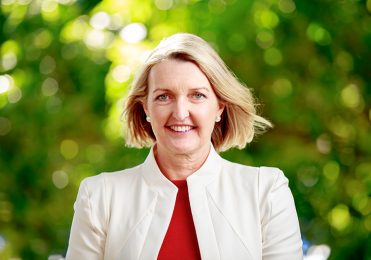Mr Shane Skillen, Manager of eLearning
Originally published August 2011
In the aftermath of the British riots, the innate dichotomy of social media is being extensively highlighted. On one hand there was the mobilisation of masses that the technology reportedly enabled. Apparently, akin to a military invasion, rioters weaponised social media, using it to identify soft targets to loot and pillage, to incite violence and destroy public and private property. Alternatively, social media played a large part in the organisation of cleanup activities following the riots – many ‘good news’ stories received more coverage through social media than the traditional media outlets that chose to continue a discourse of panic in relation to social media. Politicians and traditional media called for social media services to be shutdown as a means to suppress the riots.
However social networks are cautiously protecting their user base. An insight into their position comes from a recent blog post by Twitter co-founder Christopher ‘Biz’ Stone reported in the International Business Times(10 August 2011):
Our goal is to instantly connect people everywhere to what is most meaningful to them. For this to happen, freedom of expression is essential. Some tweets may facilitate positive change in a repressed country; some make us laugh … some anger a vast majority of users. We don’t always agree with the things people choose to tweet, but we keep the information flowing irrespective of any view we may have about the content.
People generally choose which type of media they wish to consume. The climate for social media is just right for mass consumption in Australia.
In the early 1900s, media critics such as Frank Raymond Leavis judged the consumption of media based on class structure and offered their expertise on judgement and evaluation. By mid-twentieth century, Anglo-Australian cultural and media tradition experienced a paradigm shift when British academic Richard Hoggarts espoused in The Uses of Literacy that, in a modern democracy, people could and would freely choose their media entertainment (Hartley, 2009). Yet, in the light of contemporary events, many regard social media as meretricious entertainment for popular culture or manipulative corporate populism (Hartley, 2009) plagued by juvenile, pernicious commentary. This medium, however, is not going away, so we need to reflect on the bigger question regarding its use: what are the transferrable skills?
Increasingly, social media has become the predominant form of advertising for mainstream business. In the world’s current economic climate it makes sense too. At its heart, the majority of social networking tools are free; however, corporate expenditure on social media can soar into hundreds of thousands, perhaps millions. Developers of these tools go to great lengths to interconnect their medium with other social media outlets which only increases their effectiveness. This is creating environments where corporations are employing ‘social strategists’ and teams of marketers whose sole purpose is to maximise and monitor the brand in virtual space. They are looking for knowledge workers and collaborators who can navigate and operate in this continually shifting landscape. Every day, new roles in all kinds of industries are being created to facilitate these advances in technology. Professor Erica McWilliam, in an address to parents during her Scholar in Residence year at Brisbane Girls Grammar, predicted that many of the students in the room would be employed in technology-based roles yet to be invented across a range of disciplines. We are already seeing many examples of these transferable skills being used to create ventures in social entrepreneurship such as micro-financing, food drives and sourcing emergency shelters in times of crisis.
I have accounts on Twitter, Facebook, Linkedin, ListGeeks and many more social networking sites—so please pay me thousands of your finest pounds sterling to impart my secrets to you or your organisation. I’m willing to do lectures, presentations, podcast, shoutcasts and faith healings too, if the price is right. (luridtalesofdoom, 2011)
Social networking is about active as opposed to passive consumption, and it is highly effective. Users, including students, search for information to consume rather than relying on information provided by email, television, radio, and print including textbooks used in formal classrooms, which are all forms of passive media. With passive media students may or may not engage with the content, however social media involves ‘liking’ or ‘following’, and using a tool (technology) to actively engage with it. Hartley (2009, p.18) states that commercial culture may be outpacing education in the form of teaching creative digital literacies via entrepreneurial and distributed learning. We need to recognise and leverage the benefits which the rich informal activities (Sharples, 2006) our young people engage in:
Users have the tools to actively engage in the construction of their experience, rather than passively absorbing existing content. (Mason & Rennie, 2008)
There is a need to place value in what some might see as idle activity. Herein lays the struggle of education and parenting—navigating the interdependencies between opportunities and risks (Livingstone & Brake, 2009). This is the generation of user-generated content. Technology users’ main form of knowledge consumption is being derived from their peers, not a publishing house.
Fundamentally, learning within an institution as in the home, is social and interactive. It is experiential and often the derivative of conversation, interaction, demonstration and response, much like the medium of social networking. The foundations of most students’ experiences therefore are located in the context and socio-cognitive processes of interaction. These sentiments were espoused in educational literature (Candy, 1991, Laurillard, 1995 & McLoughlin & Luca, 2002) long before the advent of online social networking. So teachers and parents alike navigating this relatively new construct can trust their instincts and judgement when teaching about analysis, inquiry, communication, networking and higher order thinking.
When it comes to learning about critical citizenship, the old rules still apply, even within a convergence culture (Jenkins, 2006) that encompasses television, print, web and radio in one small handheld device. It has the potential for the first time in history to give anyone a voice which can be heard worldwide.
How do we ensure our children receive the important lessons regarding critical citizenship? We can start with discussions that don’t centre on the ‘social media panic’ discourse, forgetting the ‘mobs’ with weapons of mass communication and focus on the societal value of these technologies, emphasising the pursuit of positive goals by exploiting the innovation surrounding communication and collaboration.
References
Hartley, J. (2009). The Uses of Digital Literacy. Brisbane, Queensland, Australia: University of Queensland Press.
Jenkins, H. (2006). Convergence Culture. New York: New York University Press.
Livingstone, S., & Brake, D. R. (2009). On the rapid rise of social networking sites:new findings and policy implications. Children & Society , 75-83.
luridtalesofdoom. (2011, May 27). I’m going to work as a Social Networking Expert. Retrieved August 16, 2011, from I’m going to work as a Social Networking Expert: http://en.forums.wordpress.com/topic/im-going-to-work-as-a-social-networking-expert
Mason, R., & Rennie, F. (2008). E-learning and social networking handbook: resources for higher education.New York: Routledge.
Sharples, M. (2006). How can we address the conflicts between personal and informal learning and traditional classroom education? Big Issues in Mobile Learning (pp. 20-22). Nattingham: University of Nottingham.
Times, I. B. (2011, August 10). London Riots 2011: Twitter Refuses Closure of Rioters Accounts, Protects ‘Freedom of Expression’. Retrieved August 15, 2011, from International Business Times – World Edition: http://www.ibtimes.com/articles/195609/20110810/london-riots-2011-uk-riots-twitter-closure-social-media.htm
Read reflective commentary from Manager of eLearning, Mr Shane Skillen, on his piece, ‘The Business of Being Social’.
When I was asked to reflect on an article I had written in the past, I was excited. An opportunity to reflect on my understanding after a significant period seemed like a unique opportunity. That feeling soon changed to fear, uncertainty, and doubt as I read the title, ‘The Business of Being Social’. I wondered why I felt that way and it occurred to me that most of what I had written may be redundant, or perhaps my musings of the future were misguided or even underestimated. After all, it was written in 2011.
The article was published on the School website; it was shared around the ‘Twittersphere’ by some colleagues. However, social media at that time was mainly Facebook and Twitter, while Instagram was a blip on the radar with no one sure of its purpose, beyond narcissism. Now, it is highly likely this article will be accessed via social media. Today it is not just a distraction for teenagers; everyone knows about it and, more frighteningly, everyone has an opinion.
After reading the article again this year, I was filled with a feeling of dismay. My opening paragraph talks of the British riots and the role social media played— both good and bad. I could not help but think that, despite the passage of time, little has changed.
My initial thoughts went straight to a plethora of contemporary examples. The yellow vest movement in France, fake news, Sri Lankan bombings and, closer to home, the recent tragedy in Christchurch.
In 2019, dichotomies still exist in social media. In the days that followed the tragedy of Christchurch, social media and the masses cast a positive light, most deservingly, on New Zealand Prime Minister, Jacinda Adern. Her grace, humanity, dignified demeanour and leadership qualities were espoused as an exemplar of modern leadership. However, bubbling away under the surface, the story emerged that the horrific act in Christchurch was broadcast for more than 20 minutes through a social media livestream. This level of malevolence was a catalyst for the Australian Government to expedite laws to hold social media executives accountable for content and its timely removal.
Organisations are rightly apprehensive about risks to their corporate identity and the power of public opinion. This was apparent in the case of Australian Wallabies player, Israel Folau. His decision to post his personal views had him defending his career and legacy as footballer and role model. Rugby Australia reacted to the social media outcry fuelled by ongoing commentary by mainstream media.
Mark Scott, Secretary of the NSW Department of Education and past ABC executive, rightly asserts ‘… more information often means less insight and there is a need to educate people and to understand ourselves that there is a risk of being caught in an echo chamber.’ (M.U. Publishing 2019)
Scott goes on to endorse the importance of critical thinking and intellectual engagement in schools. Our girls are encouraged to take positions, but these must be supported with the critical use of research, evidence and data. It is affirming that the message at Girls Grammar is to challenge assumptions, not to follow the status quo because it is easier, and always ask the difficult questions. So, if faced with many contradictory viewpoints, they can filter out the ‘noise’ of Scott’s ‘echo chamber’ and come to a justified and ethical viewpoint.
References
Melbourne University Publishing, M. U. (2019, April 4). Mark Scott, author of ‘On Us’ on ABC News Breakfast 4 April 2019. Retrieved from: https://youtu.be/hMdf4YZ_Bbc




